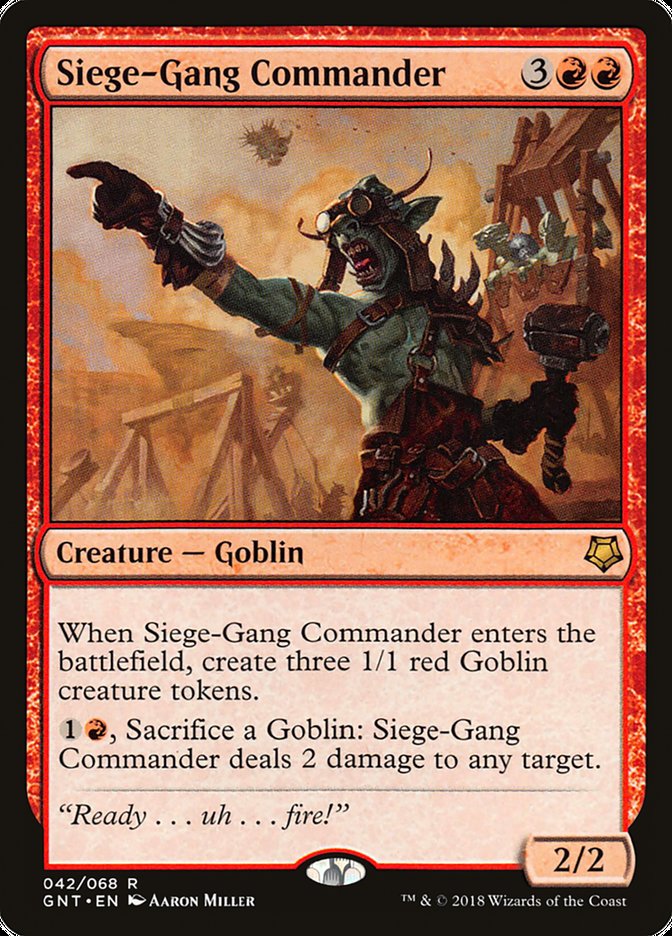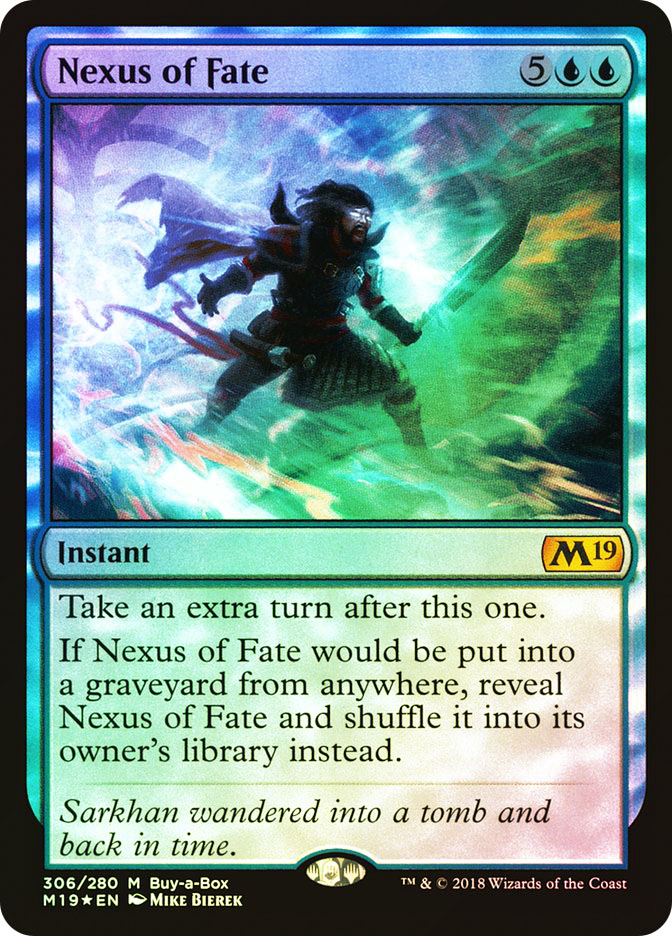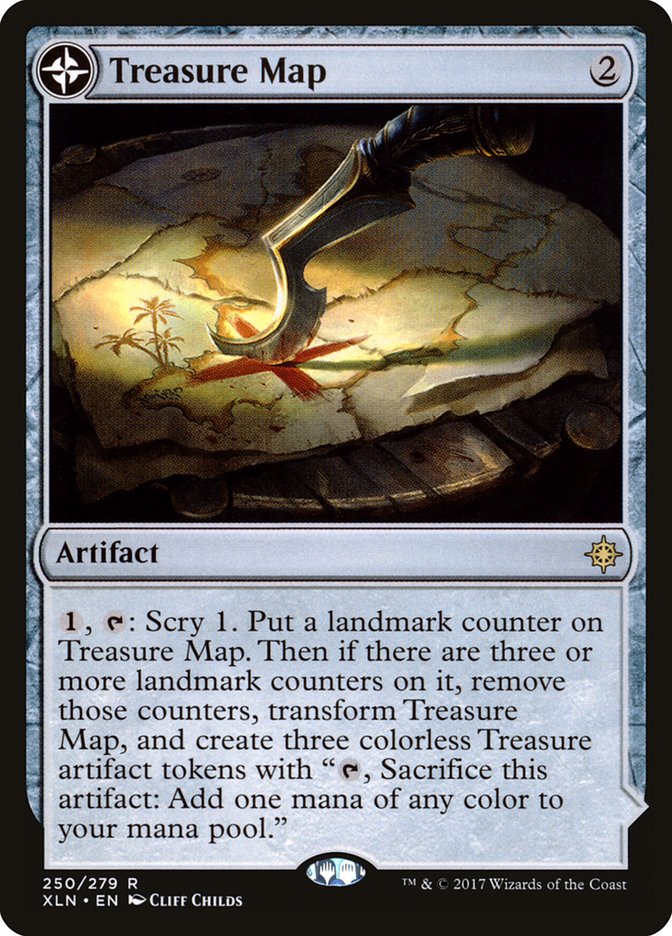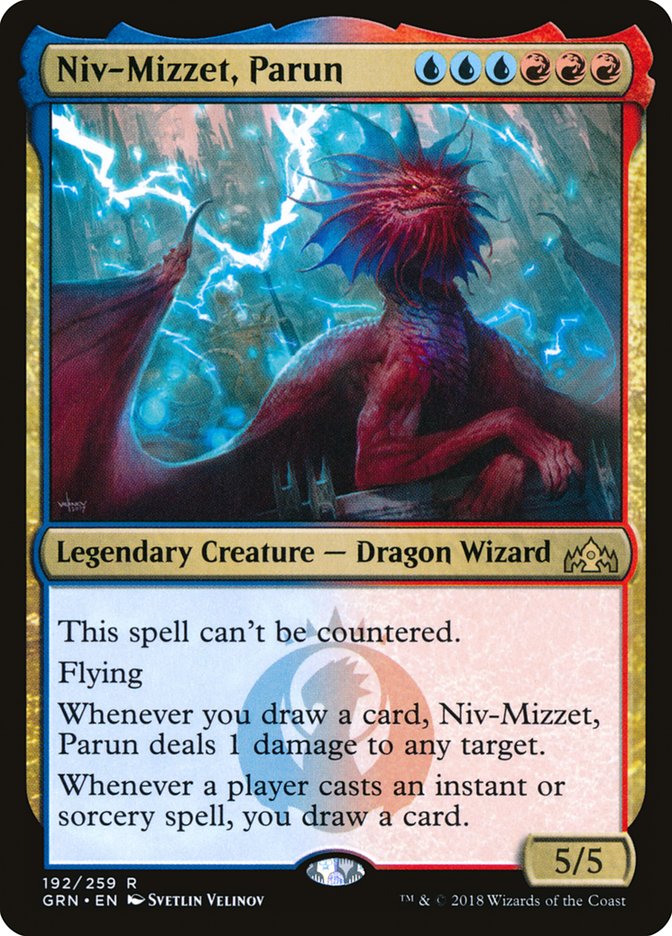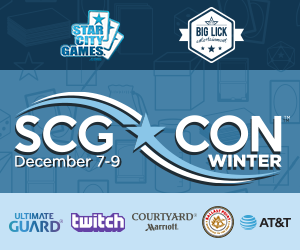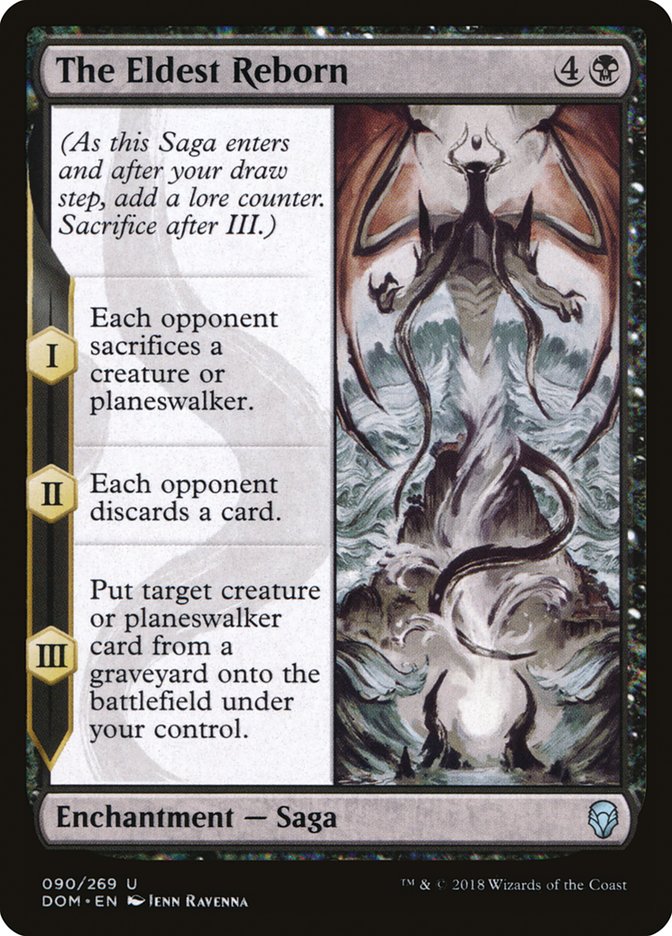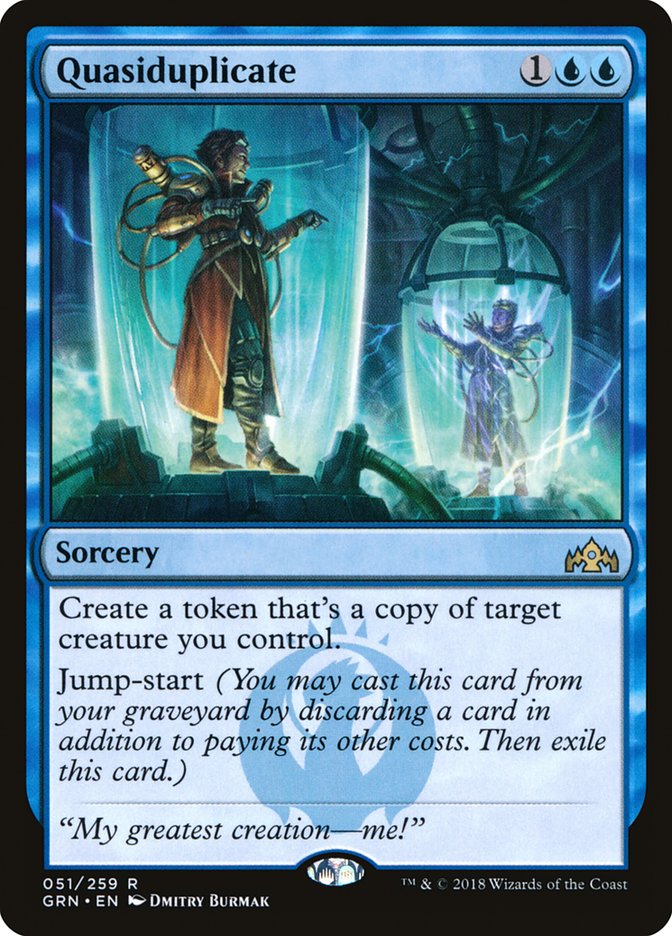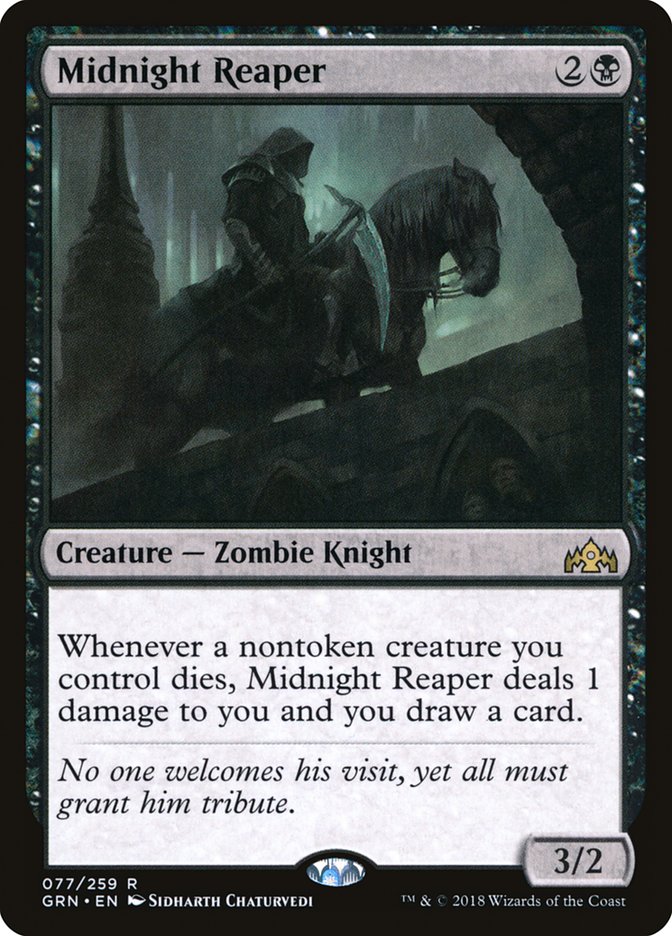Standard is as dynamic as ever, but there appears to be a general settling
down of the format as folks find their bearings between Boros Aggro,
Golgari Midrange, Izzet Drakes, and Jeskai Control. This is my favorite
part of any Standard format, where innovation on known quantities is
maximally rewarded. Familiarity with the common play patterns between the
major decks is a given, so any way that a savvy deck designer can add a few
tricks to upend a common pattern will pay massive dividends in-game.
I’m talking about sideboard jukes like going control with Niv-Mizzet, Parun
in Izzet Drakes, early-game alternative win conditions like Legion Warboss
in Jeskai Control, ways to regain the initiative like Dive Down or
Entrancing Melody, and ways to keep the gas flowing like Experimental
Frenzy in Boros or Mono-Red.
I’m talking about cutting sacred cows like Rekindling Phoenix in favor of
an unusual threat like Siege-Gang Commander. I’m talking about trying an
off-the-wall combo deck like the nearly-forgotten Nexus of Fate strategies
from last season. Clearly, the players who capitalize on holes in the
metagame and exploit the obvious play patterns of the top decks will be
next week’s winners. That fact alone generates the drive, the goal, the
White Whale of competitive metagaming in Magic.
This week, there are several trends we’ve seen take hold, and several
opportunities still ripe for sharp players to use for an edge. After the
MOCS results from this past weekend and GP Milwaukee’s results from the
prior one, there are a few cards either poised for imminent breakouts or
still not getting the respect they deserve. They fall into a few different
buckets, but there are reasons to get excited about each and every one of
these.
1. Treasure Map
Creatures (7)
Planeswalkers (3)
Lands (25)
Spells (25)

Adrian did an incredible job turning an idea–“Stick a Niv-Mizzet, win”–
into an entire decklist and destroying an entire GP with it. During testing
for the Pro Tour, prior to the breakout of white-based aggro decks and the
ensuing panic, our team identified Niv-Mizzet battles as the key to
Standard. Untapping with Niv-Mizzet correlates with a win over 90% of the
time, even moreso than untapping with Teferi, Hero of Dominaria.
We built a bunch of decks with Sarkhan, Fireblood to try to sneak in an
early Niv-Mizzet and win before the game really got started. We tried
various Izzet and Grixis brews. The time we spent obsessing over Niv-Mizzet
informed my Phoenixless Izzet Drake brew with Search for Azcanta, which
allowed the deck with only twenty lands to hit the seven mana necessary for
Niv-Mizzet + Dive Down consistently. I just wanted to protect a Niv-Mizzet
in the midgame to end things against the semi-mirrors, which trumped any
number of recurring Arclight Phoenixes. It was just a straightforward
mirror-breaker that also sometimes stole games against control.
Adrian took that idea and ran with it, recognizing that a mana burst in the
middle turns could lead to a protected Niv-Mizzet and a game-ending rush of
cards with minimal fuss. Instead of Search for Azcanta, he chose Treasure
Map as his mana-boosting permanent of choice. Where Search for Azcanta is
the blue Rampant Growth, Treasure Map is the colorless Dark
Ritual/Ancestral Recall split card.
Well, that’s a little generous, but the card does keep gas flowing in the
situations where cards are short and offers the ability to steal a game
with a Niv-Mizzet backed up with countermagic as early as turn 5 or 6. One
of the fundamental forces that guides current Standard is the inevitability
of the Niv-Mizzet endgame, and Treasure Map offers one of the best ways to
get there early and often.
Now, if this were Treasure Map’s only use, it would still be an important
cog in the Standard machine, but Sam Black and Ben Weitz have done great
work on their Big Red and Boros Control decks incorporating Treasures
alongside Arch of Orazca, Banefire, and Siege-Gang Commander. It also found
a place in the sideboard of Gerry Thompson and Oliver Tomajko’s builds of
Mono-Red Aggro at the Pro Tour and Grand Prix Milwaukee, respectively.
Offering a burst of mana and the promise of a few extra cards in a cheap
colorless card is a juicy bargain, indeed.
Here’s what Ben Weitz used to go 7-1 in this weekend’s MOCS:
Creatures (20)
- 4 Siege-Gang Commander
- 4 Rekindling Phoenix
- 4 Dire Fleet Daredevil
- 4 Goblin Chainwhirler
- 3 Legion Warboss
- 1 Goblin Cratermaker
Lands (25)
Spells (15)

Nothing slaps quite like a Banefire to the face, I tell you. I won’t
pretend to be an expert on this particular model of Treasure Map-based Big
Red, but rest assured that this deck is a lot better than one might expect
at first glance. It smashes the white aggro decks, and the unusual threat
selection makes it an appealing candidate to fight control and Izzet
Drakes. I look forward to seeing the next big thing folks do with Treasure
Map, because ignoring the impact this card is having on Standard is a fatal
folly.
2. The Eldest Reborn
This one is a lot more straightforward than Treasure Map, which has uses in
several different contexts. The Eldest Reborn smashes Niv-Mizzet + Dive
Down in embarrassing fashion. If people shift towards decks like Adrian
Sullivan’s Jeskai Control or Phoenixless Izzet Drakes, The Eldest Reborn
will give them the thrashing of a lifetime. The card is also a wonderful
parry to Carnage Tyrant, which often is the last threat standing after a
Finality clears a cluttered battlefield. Sequencing in the Golgari mirrors
between Vivien Reid and The Eldest Reborn will be a constant struggle, but
I’m convinced that there’s a place for this enchantment in a Standard
format owned by hexproof or uncounterable threats.
Perhaps a Grixis Niv-Mizzet deck with Treasure Map and The Eldest Reborn is
a possibility and such a deck would likely dismantle the current crop of
Jeskai Control lists. I modified a Corey Burkhart list to present a very
early rough draft of what such a deck might look like. Thought Erasure as a
pre-emptive answer to opposing Niv-Mizzets sits perfectly alongside The
Eldest Reborn as a perfect rejoinder to a topdecked one. If the format goes
full Niv, I’ll be brewing with Grixis.
Creatures (4)
Lands (26)
Spells (30)

3. Hostage Taker
Have we forgotten this gem? Everyone is thrilled with the innovation of
Entrancing Melody in Izzet Drakes, but Hostage Taker offers a similar
effect at an attractive price and size. It’s incredible to steal an
opposing Adanto Vanguard or Benalish Marshal and block the random 2/1
bodies left over out of Boros Aggro. It also (drumroll) steals Treasure
Map. Consider that for a second.
Mark Jacobson (and the rest of his testing group with Massdrop) should be
commended on their interesting choice, which demolishes most Boros Aggro
decks and offers an interesting set of cards to fight the emergent forces
of Standard. I expect this type of deck to do insanely well against
Niv-Mizzet decks and Benalish Marshal decks. Golgari and Izzet Drakes will
certainly be a bit more complex, but a runaway Thief of Sanity can quickly
end a game and Hostage Taker + Dive Down similarly gains massive tempo and
card advantage for a low cost.
Oh, and it also plays The Eldest Reborn and Doom Whisperer, giving it a
clean pair of answers to enemy Carnage Tyrants, and it has the same
wonderful pre-emptive answers to Niv-Mizzet that the Grixis Control deck
above played. With a clean two-color manabase, this may be the future of
midrange outside of Golgari in Standard.
Creatures (13)
Lands (25)
Spells (22)

Oh, but there’s something else I want to add to this deck. A synergistic
add with all the cool things going on in this deck. Something that seems
like a powerful effect, but maybe one that hasn’t been properly pushed.
4. Quasiduplicate
This card is incredible alongside Crackling Drake, Doom Whisperer, Hostage
Taker, and Thief of Sanity. I’m shocked it hasn’t been creeping into
decklists already, as a single copy can absolutely flip a game on its head.
Imagine playing a turn 5 Crackling Drake against Golgari, then countering
their removal spell with Dive Down before dropping two copies the very next
turn. It quickly becomes “cast Finality or die” time for the Golgari deck,
which is not a bad spot to put them in.
Or consider the card alongside Doom Whisperer. The repeatable surveil
ability on the massive creature means that there’s a great chance of
finding a Quasiduplicate for copying action, which means an opponent might
be facing eighteen points of flying, trampling Demon on turn 6.
Imagine an inverse Beacon Bolt, where instead of killing their best
creature from either your hand or the comfort of your graveyard, this spell
gives you a second copy of your best one. Both cards require some set-up
beforehand, but both offer incredible rewards once you provide the correct
shell.
Dimir and Izzet decks need to be considering a copy (or two) of this card
to make a copy (or two) of their best threats. The fact that it happily
pitches to Tormenting Voice, Chart a Course, and Radical Idea in Izzet
while happily hitting the graveyard off surveil from Dimir is just icing on
top of a very powerful cake. The synergies are too attractive to leave this
spell on the sidelines any longer.
But I’m not only interested in Izzet and Dimir cards for metagame
development, though I have a predilection for those colors in this format.
No, Golgari has seen a rush of changes over the last month of play, and
this week we’ve seen the re-emergence of…
5. Midnight Reaper
Alongside The Eldest Reborn, Midnight Reaper is the best tool for Golgari
to combat the Jeskai decks in a rapidly evolving Standard. Ethan Gaeski has
one of the more balanced Golgari lists I’ve seen recently, and his 8-0
finish in this past week’s MOCS supports the case for Midnight Reaper.
Creatures (25)
- 4 Llanowar Elves
- 2 Carnage Tyrant
- 4 Wildgrowth Walker
- 4 Merfolk Branchwalker
- 2 Seekers' Squire
- 4 Jadelight Ranger
- 3 Ravenous Chupacabra
- 2 Midnight Reaper
Planeswalkers (3)
Lands (24)
Spells (8)

With Wildgrowth Walker becoming standard issue in Golgari, the drawback of
Midnight Reaper is somewhat ameliorated. Against semi-mirrors, there’s no
longer a massive issue of inadvertently dying to one’s own Reaper from a
huge Finality, because Wildgrowth Walker does so much to stunt aggression
and lead to clogged battlefields. The card was always powerful against
control decks, but now it’s a solid player in all the midrange matches as
well. It draws fire from opposing Ravenous Chupacabras, stretching them
thin and leaving Wildgrowth Walkers to keep growing and providing a large
life buffer for future Reapers.
Now, Ethan’s list contains Llanowar Elves, which has been a point of some
small contention among Golgari pilots. Autumn Burchett knocked heads at the
Pro Tour without the card, and given that games in the mirror tend to be
more grindfests than snowballing runaway contests of battlefield presence,
it’s certainly justifiable to cut the Elves. However, with Midnight Reaper,
suddenly the liability of topdecked midgame Llanowar Elves is a bit less
worrisome. The card that allows for turn 5 Carnage Tyrants can be cycled
away on a chump block or gang block, weakening the case for its exclusion.
This decklist is simply a solid blend of several different principles for
positioning in the Golgari mirror match and against control decks, and I
would heartily recommend it to people for this weekend’s events. That is,
if you’re a Golgari aficionado. I’m sure Brad Nelson has his own analysis
ready for adherents to that archetype.
As for me, I’d be much happier packing Dive Down and Quasiduplicate, but
that’s the beauty of this Standard format. There’s something for everyone!


